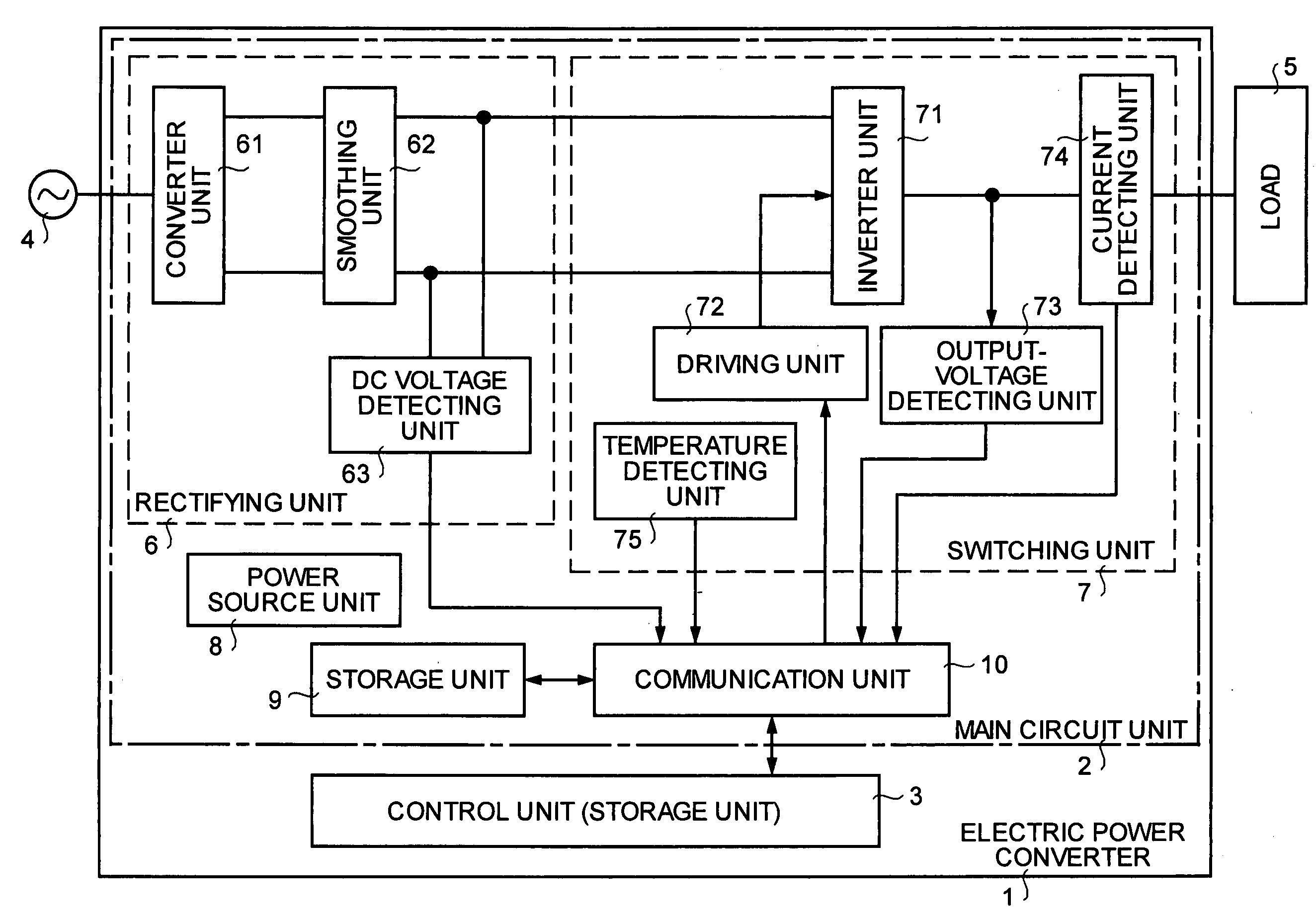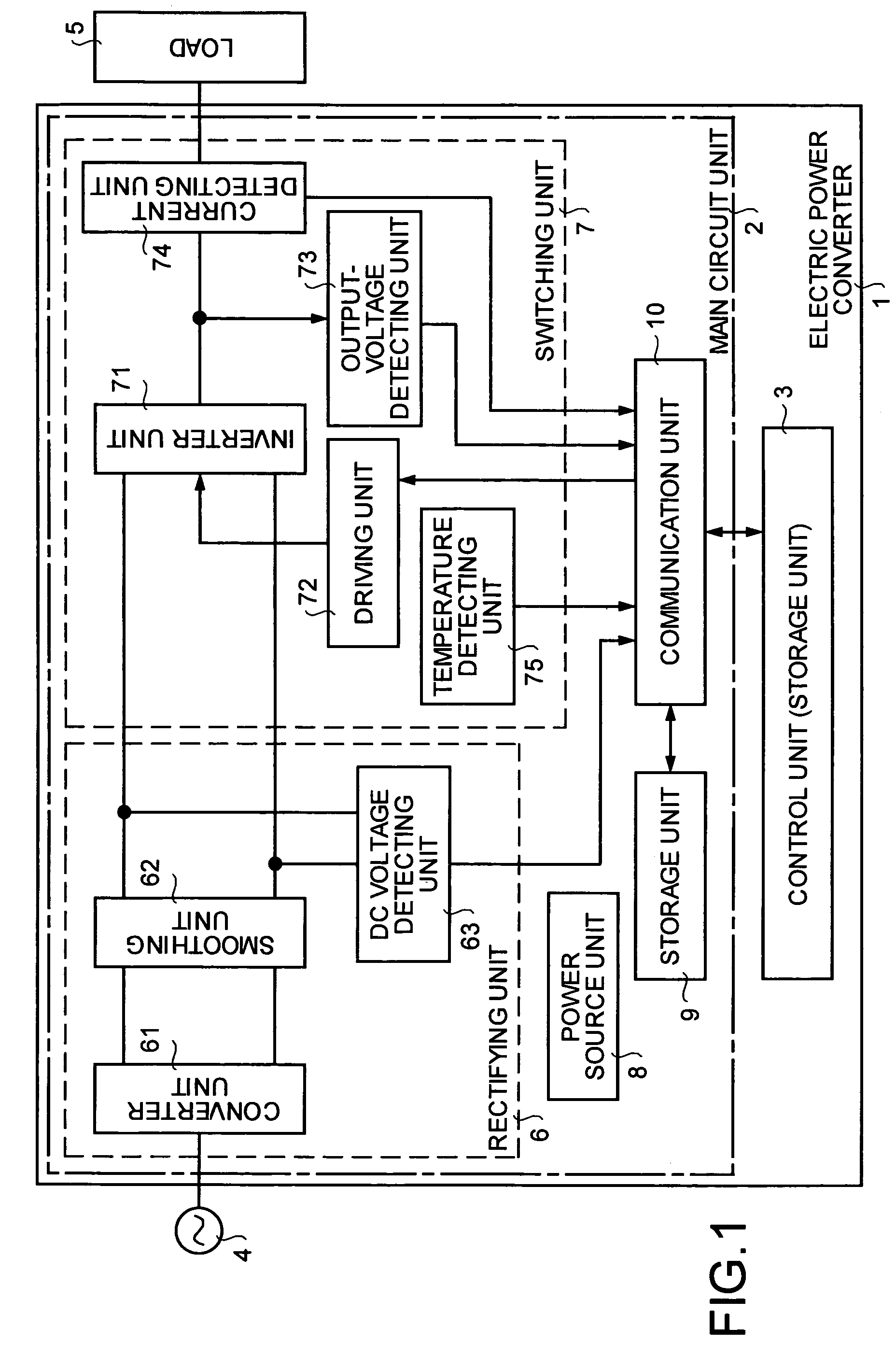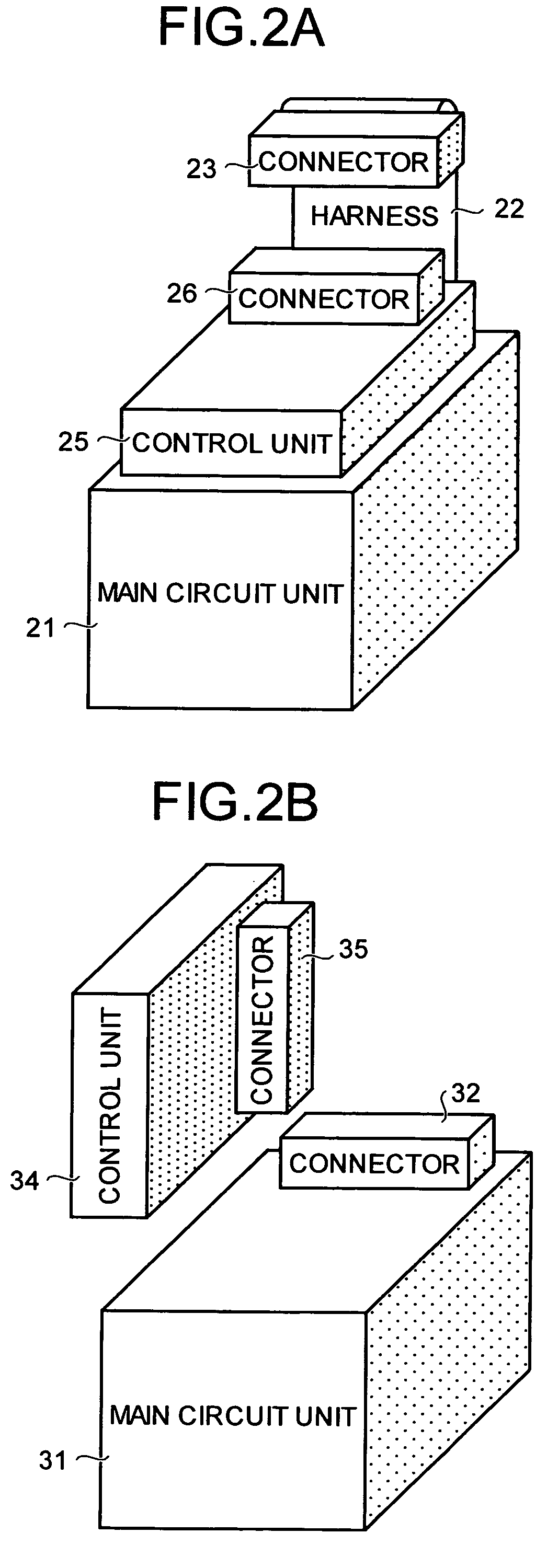Electric power converter
a technology converters, applied in the direction of power conversion systems, ac-ac conversion, dc-dc conversion, etc., can solve the problems of troublesome function change work, troublesome combining work, and increase the volume of inventories, so as to facilitate the combining of work and reduce the inventory of electric power converters. , the effect of easy change of function
- Summary
- Abstract
- Description
- Claims
- Application Information
AI Technical Summary
Benefits of technology
Problems solved by technology
Method used
Image
Examples
first embodiment
[0024]FIG. 1 is a block diagram of a structure of the electric power converter according to a first embodiment of the present invention. The electric power converter 1 shown in FIG. 1 is made up of a main circuit unit 2 and a control unit 3. The electric power converter 1 generates an AC voltage, which is arbitrary in frequency and voltage, from a commercial AC power source 4, and supplies the voltage to a load 5.
[0025]The main circuit unit 2 includes a rectifying unit 6, a switching unit 7, a power source unit 8, a storage unit 9, and a communication unit 10. The main circuit unit 2 and the control unit 3 are housed in mutually independent cases, respectively, and transmit necessary information to each other through the communication unit 10.
[0026]The rectifying unit 6 includes a converter unit 61 that converts the AC voltage of the commercial AC power source 4 into a DC voltage, a smoothing unit 62 that smoothes the DC voltage converted by the converter unit 61, and a DC voltage d...
second embodiment
[0045]FIG. 4 is a block diagram of a structure of an electric power converter according to a second embodiment of the present invention. In FIG. 4, the same reference numeral as in FIG. 1 (first embodiment) is given to the same or equivalent component. Herein, a description is provided centering about a part relative to the second embodiment.
[0046]As shown in FIG. 4, in the electric power converter 51 according to the second embodiment, the communication unit 10 is omitted in the structure shown in FIG. 1 (first embodiment), and a signal of each unit of the main circuit unit 2 is directly connected to the control unit 3 by one-to-one correspondence. The same operation and effect as in the first embodiment can be obtained by the structure.
third embodiment
[0047]FIG. 5 is a block diagram of a structure of an electric power converter according to a third embodiment of the present invention. In FIG. 5, the same reference numeral as in FIG. 1 (first embodiment) is given to the same or equivalent component. Parts that relate to the third embodiment have only been explained below.
[0048]As shown in FIG. 5, in the third embodiment, a DC power source 55 is provided in parallel with the converter unit 61 at an input terminal of the smoothing unit 62 in the electric power converter 1 shown in FIG. 1 (first embodiment). Although the DC power source 55 is a backup power source, a power source that can supply DC power can be likewise connected. As a result, in the electric power converter designed to be uninterruptible, the same operation and effect as in the first embodiment can be obtained.
[0049]Although an example applied to the first embodiment is shown in the third embodiment, it is obvious that the example is also applicable to the electric ...
PUM
 Login to View More
Login to View More Abstract
Description
Claims
Application Information
 Login to View More
Login to View More - R&D
- Intellectual Property
- Life Sciences
- Materials
- Tech Scout
- Unparalleled Data Quality
- Higher Quality Content
- 60% Fewer Hallucinations
Browse by: Latest US Patents, China's latest patents, Technical Efficacy Thesaurus, Application Domain, Technology Topic, Popular Technical Reports.
© 2025 PatSnap. All rights reserved.Legal|Privacy policy|Modern Slavery Act Transparency Statement|Sitemap|About US| Contact US: help@patsnap.com



